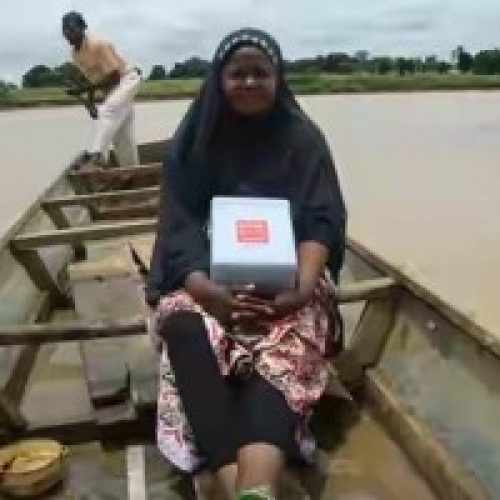Polio Worldwide as at August 12
Afghanistan
One new wild poliovirus type 1 (WPV1) case was confirmed this week in Achin district of Nangarhar, which is the first case in the province this year. This most recent case had onset of paralysis on 17 July. The total number of WPV1 cases for 2015 is now seven.
Intensive and strengthened supplementary immunization activities are planned in the coming months. National Immunization Days (NIDs) are scheduled on 16 – 18 August using bivalent oral polio vaccine (OPV). Subnational Immunization Days (SNIDs) will follow across the south of the country on 20 – 22 September also using bivalent OPV and NIDs using trivalent OPV will take place on 18 – 20 October.
Nigeria
No new wild poliovirus type 1 (WPV1) cases were reported in the past week. No cases have been reported in 2015. Nigeria’s total WPV1 case count for 2014 remains six. The most recent case had onset of paralysis on 24 July 2014 in Sumaila Local Government Area (LGA), southern Kano state.
No new cases of type 2 circulating vaccine-derived poliovirus (cVDPV2) cases were reported in the past week. The most recent case had onset of paralysis in Kwali Local Government Area (LGA), Federal Capital Territory (FCT) Abuja, with onset of paralysis on 16 May; this is the only cVDPV2 case reported in Nigeria in 2015.
In line with the National Emergency Action Plan for polio eradication, aggressive and rapid vaccination activities are conducted in response to any detected virus. Three case response ‘mopping-up campaigns’ using trivalent oral polio vaccine (tOPV) are taking place in the FCT and Kaduna and Kogi states, as well as in adjacent LGAs of Niger and Nasarawa states, to stop transmission of the persistent strain of cVDPV2. The third of these is scheduled for 15 – 18 August. Subnational Immunization Days (SNIDs) are planned in the north of Nigeria on 5 September and 17 October.
Pakistan
One new wild poliovirus type 1 (WPV1) cases was confirmed this week in Peshawar district of Khyber Pakhtunkhwa with onset of paralyses on 8 June. The most recent case, also reported in Peshawar district of Khyber Pakhtunkhwa, had onset of paralysis on 30 June; the location of this case is still under review. The total number of WPV1 cases for 2015 is now 29, compared to 108 at this time last year.
No new type 2 circulating vaccine-derived poliovirus (cVDPV2) cases were reported in the past week, and no cases have been reported in 2015. The number of cVDPV2 cases reported in 2014 remains 22. The most recent case had onset of paralysis on 13 December 2014.
Two new environmental samples positive for WPV1 were reported this week, the first in Quetta district of Balochistan and the second in Lahore district of Punjab. These most recent positive samples were collected on 22 July and 19 June respectively.
Environmental surveillance indicates continuing circulation of polioviruses, not just in known infected areas but also in areas without confirmed cases. Environmental surveillance continues to be a very helpful supplemental surveillance tool enabling the programme to increase the overall sensitivity of surveillance for polioviruses.
Central Africa
No new wild poliovirus type 1 (WPV1) cases were reported in the past week. No cases have been reported in 2015. In 2014, 10 cases were reported in central Africa: 5 in Cameroon and 5 in Equatorial Guinea.
More than twelve months have passed since the last reported WPV1 case had onset of paralysis across the whole African continent. The last case in central Africa was in Cameroon, with onset of paralysis on 9 July.
National Immunization Days (NIDs) are underway in the Central African Republic (CAR) with parts of the country covered in separate campaigns between end-May and August. NIDs will take place Angola on 14 – 16 August and again on 4 – 6 September. CAR, Chad, Congo, the Democratic Republic of the Congo, Equatorial Guinea, and Gabon also have supplementary immunization activities planned for September.
Horn of Africa
No wild poliovirus type 1 (WPV1) cases have been reported in the past week and no cases have been reported in 2015. The total number of WPV1 cases that were reported in the Horn of Africa in 2014 was 6: 1 in Ethiopia (with onset of paralysis on 5 January) and 5 in Somalia.
It has been a year since the most recently reported case of WPV1 had onset of paralysis in the Horn of Africa, and across the entire African continent. The most recent case had onset of paralysis on 11 August 2014 in the Hobyo district of Mudug province, central Somalia. Six weeks are required for all remaining samples in the laboratory to be processed and confirmed negative for poliovirus before there can be more confidence in a polio-free year in Africa.
No cases of type 2 circulating vaccine derived poliovirus (cVDPV2) have been reported in the past week. No cases have been reported in 2015. In 2014, 2 cases were reported in South Sudan. The most recent case of cVDPV2 had onset of paralysis in South Sudan on 12 September.
Subnational Immunization Days (SNIDs) are ongoing in Somalia from 2 to 12 August, and further campaigns will be held in September. SNIDs are planned in Kenya on 29 August to 2 September and again later in the month with dates to be confirmed. National Immunization Days (NIDs) in Djibouti and SNIDs in Ethiopia and Kenya are also planned for September.
Madagascar
No new cases of circulating vaccine-derived poliovirus type 1 (cVDPV1) were reported in the past week. The most recent case had onset of paralysis in Mahalapye district of Mahalapye province with onset of paralysis on 7 July. The total number of cVDPV1 cases for 2015 remains nine. The total number of cVDPV1 cases reported in 2014 was one.
The 2015 cases are genetically linked to the case reported in September 2014, indicating prolonged and widespread circulation of the virus. Learn more about vaccine derived polioviruses here.
The emergency outbreak response is now being intensified. National Immunization Days (NIDs) are planned for 14 – 18 September covering an expanded age group of up to 15 years. Extended age group NIDs are also planned for 12 – 16 October. Both upcoming NIDs will use bivalent oral polio vaccine.
Middle East
No new wild poliovirus type 1 (WPV1) cases have been reported in the past week. No cases have been reported in 2015. Three cases of WPV1 were reported in the Middle East in 2014 – 2 in Iraq and 1 in Syria.
The most recent case reported from Syria had onset of paralysis on 21 January 2014, while the most recent case in Iraq had onset of paralysis in Mada’in district, Baghdad-Resafa province, on 7 April 2014.
Phase III of the Middle East outbreak response is continuing to further strengthen vaccination services for vulnerable populations and to strengthen surveillance for polioviruses across the region.
West Africa
No wild poliovirus type 1 (WPV1) cases have been reported in the past week.
It has been a year since the most recently reported case of WPV1 had onset of paralysis across the entire African continent. The most recent WPV1 case in West Africa (excluding Nigeria, one of the three remaining polio-endemic countries) occurred in Tahoua province, Niger, with onset of paralysis on 15 November 2012.
National Immunization Days (NIDs) are planned in September in Benin, Burkina Faso, Guinea, Guinea Bissau, Liberia, Mauritania, Niger and Sierra Leone, and Subnational Immunization Days (SNIDs) in Cote d’Ivoire and Mali.
Source: Global Polio Initiative






0 Comments
No Comments Yet!
You can be first to comment this post!